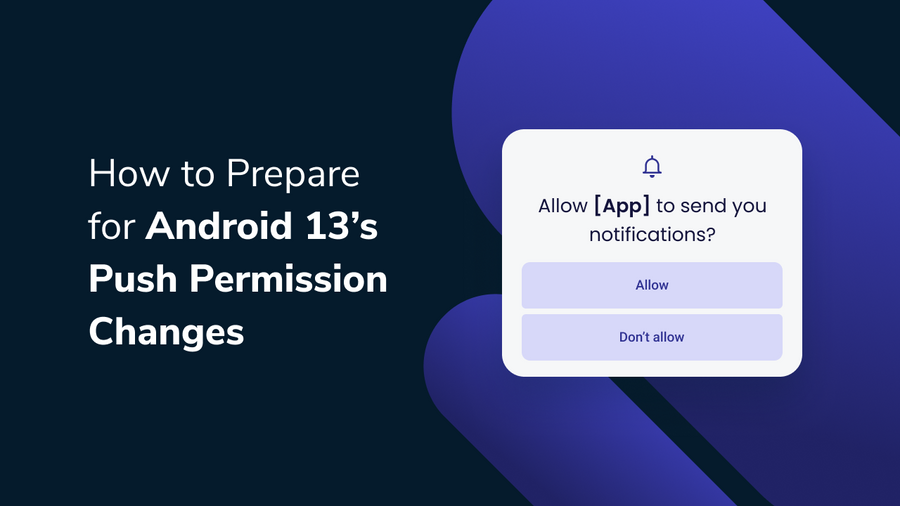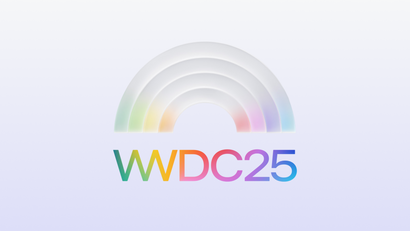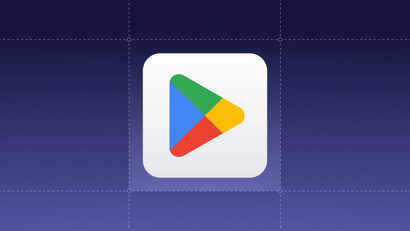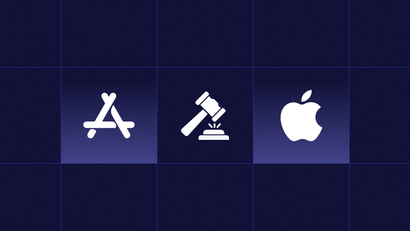This year, Android announced a major upcoming change to its notification permission behavior. With Android 13, new users will soon have to opt into push notifications, rather than only opting out of notifications they don’t want to receive. This has major implications for any app or website targeting Android devices, especially given that it is the most widely used operating system in the world.
Notifications remain a key way to combat mobile app churn and retain users over time. OneSignal customers see mobile push as the most important channel for their business, so we wanted to dive into what this change means and how you can update your app so you stay in touch with your Android 13 customers.
What’s Changing About Push Notification Permissions With Android 13?
With Android 13, Android is moving away from its default opt-out push permission experience towards an opt-in model, which will be similar to how iOS operates. This means that newly installed apps will need permission from their users before they can send them notifications.
For eligible existing apps —apps that have not previously been denied permissions on 12L or lower— the system will pre-grant notification permissions, and your customers won’t need to newly opt-in. If a user had already opted out, they will remain unsubscribed.
This change gives users more control over their notification experience. However, it also means that you may lose newly acquired customers or see a dip in subscribers if you don’t institute permission prompting best practices for Android 13.
What Happens if I Don’t Make Any Changes to My App?
If you don’t set an Android permission flow, which is available only to customers who update to the latest OneSignal SDK version, then new users on Android 13 will be immediately prompted with the native push permission prompt upon opening your app for the first time.
Poor permission prompting practices can cause users to reflexively deny push permission or even leave an app altogether. The immediate prompt can often feel intrusive or spammy.
Failing to obtain push permissions at the beginning of a customer’s lifecycle has major down-funnel implications. Following push prompting best practices can improve push opt-in rates by up to 50 percent. What this means is that if you don’t get ready for Android 13, you risk losing touch with a large number of new sign-ups who could otherwise become active users and purchasers.
How to Prepare for Android 13 Changes
In preparation for the expected release of Android 13 sometime in the next few weeks, be sure to set up your app to properly obtain permissions from new users. If you don’t make any changes, you run the risk of losing customers who have a poor initial experience with your app.
1. Update Your OneSignal SDK
To update your Android 13 permission prompting process, you will first need to update to the latest version of the OneSignal SDK for your platform and add notification permission prompting to support any new installs on Android 13.
For detailed instructions on how to do this, please read our Android 13 guide for developers.
2. Follow Best Practices for Obtaining Permissions
Users have become more selective about the types of communication they’ll allow. That’s why we suggest delaying asking for push permission until users have a chance to explore your app, and to pre-prompt them with an in-app message that communicates the unique value they’ll get from subscribing.
As we mentioned back in February, here are a few best practices to follow:
Delay Your Opt-In Request
To protect your customers’ experience, don’t request permissions within seconds of their first session. This can feel too aggressive and lead users to opt-out or leave your app altogether. Instead, delay your permission request until after users have had a chance to explore and understand your app and how notifications will enhance their experience.
Create a Pre-Permission Prompt that Emphasizes the Value of Notifications
To ensure a high opt-in rate, prime your users with the value of opting-in to notifications before pulling up the native permissions prompt. Refer to concrete and exclusive use cases. For example, you can say something such as, “We notify app users about exclusive early access to new drops!” to emphasize that notifications will enhance their experience with your product. This education will help your customers understand the value of notifications so they can make an informed decision about their experience.
Fortunately, OneSignal makes this prompting process easy with our no-code, drag-and-drop in-app messaging. Create an in-app prompt in a matter of minutes — and without any app review process — with our editor and push permission click action.
If your users decide to dismiss the pre-prompt or deny push permission altogether, you will need to invite them to subscribe again before you can send them push notifications. That’s why a cross-channel approach is always best; if a user denies push permissions, you can always target them on another channel like in-app, email, or SMS.
Learn More
Be sure to check out our developer guide on how to prepare for these changes. If you’re curious to learn more about best practices for obtaining push permissions, check out our prompting guide and webinar.




